List of Authors
>>About this blog
Recent blog post
|
[Hanes]
December 30, 2018 12:00
Hello. This is a new correspondent, Hanes. 
Did you eat something special on the day of Christmas?
I went to a long-awaited lunch at Caprice, a hidden home-style Western restaurant that I was worried about for more than a year.
The surrounding area is the area of Hatchobori, where residential areas are relatively noticeable.
The door of the shop is fitted with something like a Victoria morning stained glass.
Located in the back alley of a British city, it features a cute appearance like a tea room that is familiar to local residents.
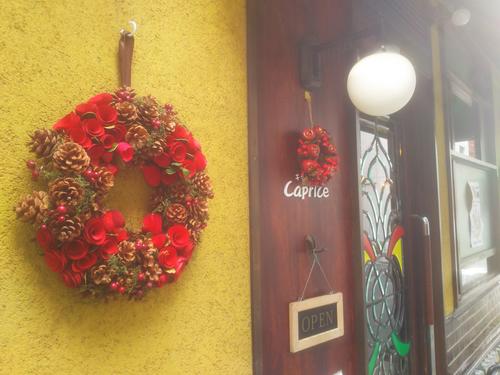
The recommendation of this shop is a daily one-plate lunch!
One plate is a cafe-like sound, isn't it?
On the day of use, in addition to the composition of young chicken peach meat and herbs of Sagochi (changed to Shimaji), a menu of salad, butter rice, and soup.
When you enter the store with excitement about what it looks and tastes....
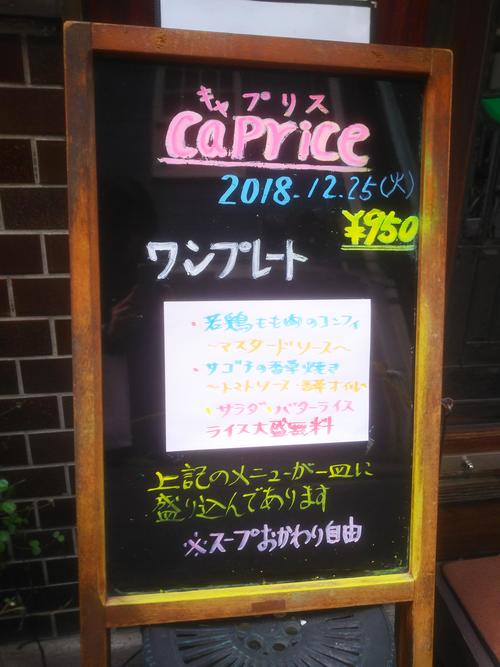
It was a very small and cozy space where the word cosy was perfect.
I couldn't imagine it from the exterior, but it was also highly evaluated that fashionable Western music was flowing.
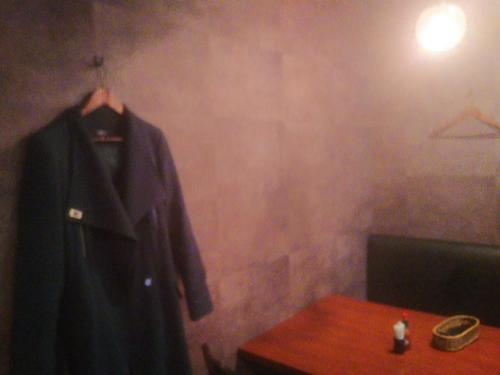
Soup is self-service and free to replace.
I went to get soup and enjoyed the atmosphere of the shop.
The fragrant butter rice and the one plate you want have been carried.
It was overturned my expectations in a good sense, "somehow more authentic than cafe s." s."
The amount of salad and good freshness were high!
While there are many shops where salads and appetizers come out first, if you want to have vegetables from time to time while eating the main, reconfirm that there may be such a one plate.
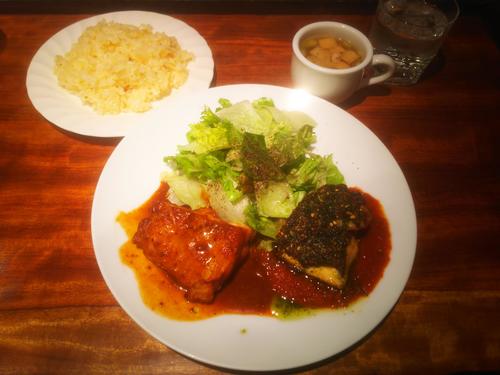
Will this confi and herb-grilled finish in Cali be conveyed in the photo?
It's just right, and the salt content of the sauce is exquisite.
And the most impressive thing was the config!
At first glance it looks like a simple cooking, and it's actually time-consuming.
The meat is soft, with a moderate mix of greyby and oil.
It was delicious with a nostalgic taste like home cooking I ate at homestay.
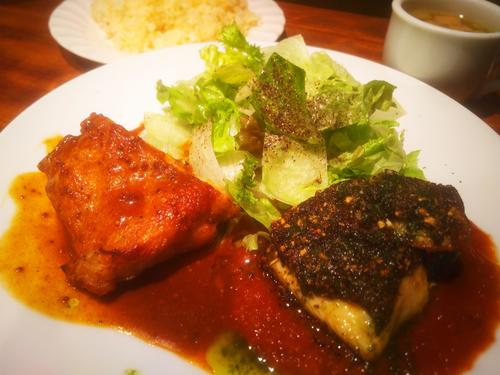
The soup is a taste that goes well with both Western and Japanese dishes.
It contained fried oil, bacon (chunk), asparagus (autumm potem), and tofu.
I want to make it by imitating it.
At night, it will be open on a separate menu, so if you are not working nearby, it may be better to use it at night.
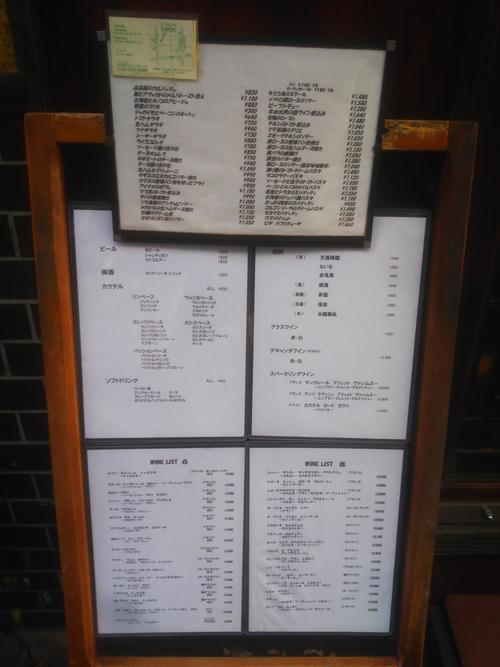
The atmosphere and taste are good, and the shop is very kind and perfect.
Please note that the payment is only cash.
I am not the only person who really wants to use it like a "hideaway"
When you come around Hatchobori, why not stop by?
■Caprice (caprice)
Address: 2-10-3, Hacchobori, Chuo-ku, Tokyo
Business hours Lunch (Mon-Sat) 11:45-14:00
Dinner (Mon-Fri) 18:00-22:30
Regular holidays: Day/holiday
※We have received permission to introduce it to the store.
[Hanes]
December 28, 2018 18:00
Hello. This is a new correspondent, Hanes. 
The date of the Chuo-ku Tourism Examination Examination is approaching, but is your study progressing smoothly?
This time, I will introduce you to visiting historical sites in Chuo-ku, which also serves as a measure against Haiku and Kawayanagi.
■Mrs. Takeko Kujo, poetry monument
She was born in Kyoto as the second daughter of the gatekeeper of Nishi Honganji Temple and married Baron Yoshiyuki Kujo at the age of 21.
My husband has been living separately for nearly 10 years due to studying and working in the UK.
During that time, I studied Waka (Nobutsuna Sasaki), Painting (Shoen Uemura), and Ikebana (Nishikawa Ikusatei) and refined my talents.
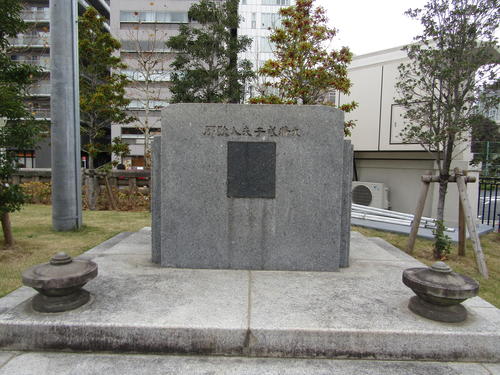
The songbooks she left include "Kinsuzu" and "Kaosen" and the essay "Muyuka".
I would like to keep in mind the "Overy Things I'm going to be drawn from the great things" engraved on poetry monument in Tsukiji Honganji Temple.
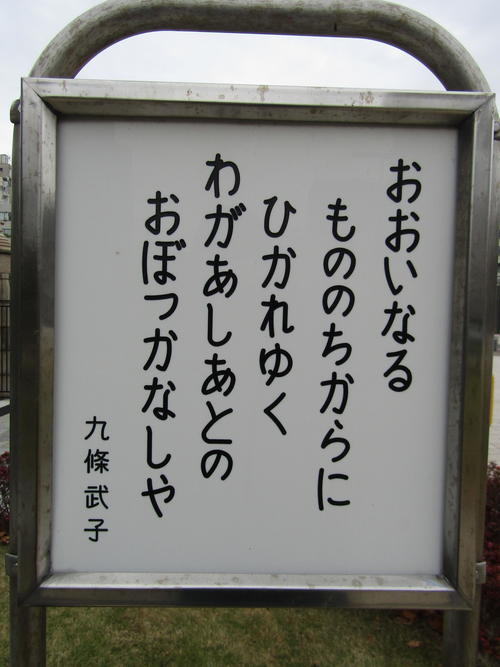
■Kawayanagi, Mizutani Ryotei stone monument
His phrase, worried about the customs of Tsukuda Island and talked about Setsuyoshi Tadataka at home, can be seen on the grounds of Sumiyoshi-jinja Shirine.
"I'm a gentle and hard man,"
■Bronze bell at the time of Kokumachi
This bell was installed in Honishi-cho during the time of the second shogun Hidetada Tokugawa, informing the people of Edo Castle of the time.
Because there was Nagasakiya (Dutch trading post's post office) nearby, Kawayanagi was written....
"I can hear the bell of Kokumachi to the Netherlands."
■poetry monument Takuboku Ishikawa
He joined the Asahi Shimbun in Takiyamamachi, Kyobashi-ku (currently Ginza 6-chome).
For about three years until he died at the age of 26 due to pulmonary tuberculosis, etc., he worked as a proofreader while working as a proofreader.
"Iss of the time when I became a newspaper light in Takiyamamachi in Kyobashi"
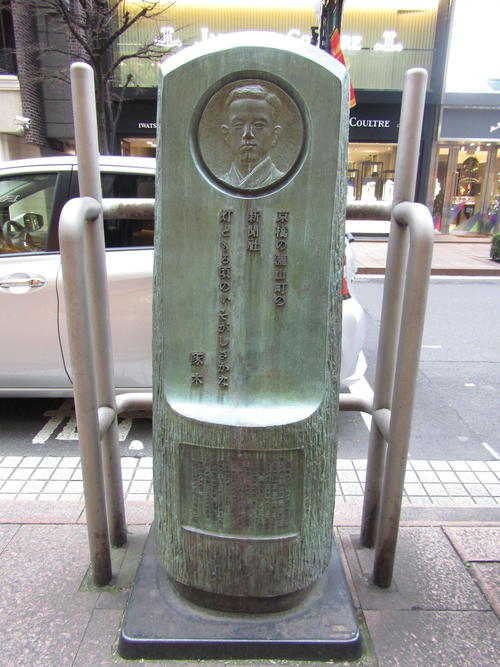
In addition, his first songbook, "A handful of Sand," begins with "Crying up by the white sand of the shores of Kojima in Tokai and hitting crabs."
■Echigo-ya
Enomoto (Takarai), one of the Juetsu Shomon and a representative of a group called Edoza (which features a flashy phrase that reflects the Edo kid's temperament), wrote such a phrase about Echigoya. .
"Echigo-ya's sound and clothespin,"
The scene seems to suddenly come to my eyes.
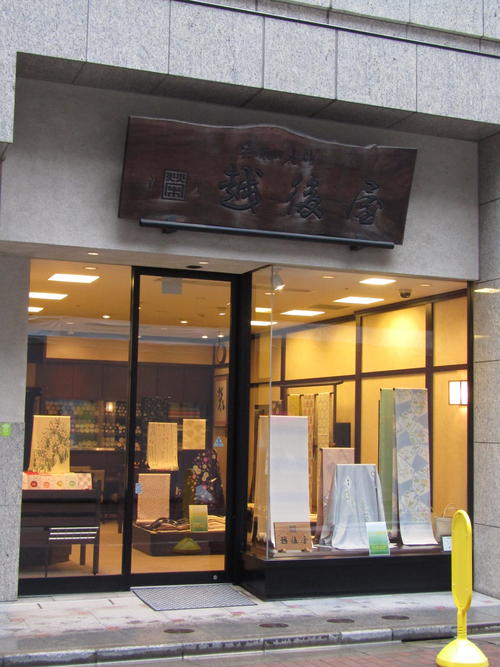
It's a great deal, so let's remember the other phrases at the corner together.
(We will not explain in detail here, but we recommend that you also check the background where each phrase is written!)
"The path of the crane is as expected in the spring of the sun."
"There is no day when one bell can't be sold, spring in Edo"
"I wonder if this number of boats will be cool."
■Site of Kaikaikan
Kaikaikan, which opened in 1905, is a two-story wooden ryokan in Kappo cuisine, which was relocated from Sendai City.
At that time, this area was a scenic and quiet place with a panoramic view of Tokyo Bay, so famous cultural figures stayed there.
The following is a summary of the Kaikaikan:
"Let's see the winter sea and make the New Tsukuda Sea Water Museum wabi live."
(From Isamu Yoshii's songbook "Poison Utsugi")
■19 tombs
On the left side of his tomb (Shinenzan Toyo-in), the creator of Tokaido Naka-Kurige, is located.
The phrase of a famous dictionary is engraved.
"Goodbye to ashes with the smoke of incense stick in your spare time."
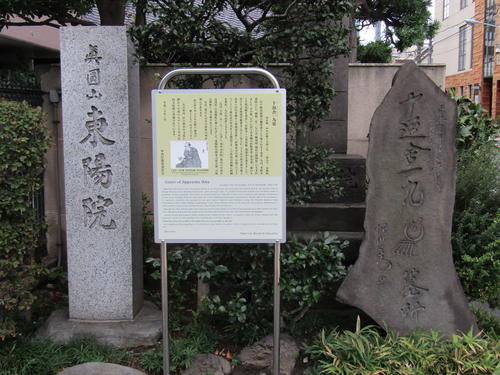
■The end of Shoin Yoshida
Despite being an excellent man who raised many of the late Tokugawa shogunate soldiers, his resignation phrase, executed in the Kodemmacho prison, is set up in Kodemmacho.
"The body is kept in the Nobe of Musashi even if it does not decay,"
■Sushi
Such a phrase was written because the hand of the craftsman holding the sushi resembles a spell of ninjutsu.
"Vinegar rice held by the body of magic" (Kawayanagi haiku collection "Shufu Yanagi Taru")
I've picked up Haiku and Kawayanagi so far.
All of them are impressive things that are memorable.
If you have a phrase you don't know, why not check it before the test?
※In this article, we will introduce some of the reasons for this.
If you learn the contents written here, you will not be able to pass it.
Please include it in advance.
Valuable Information| Ningyocho, Hamacho, Higashinihombashi area| Tsukuda, Tsukishima, Kachidoki and Harumi areas| Nihonbashi, Kyobashi and Yaesu areas| History, culture| Tsukiji, Shintomi, Minato area| Kayabacho, Hatchobori, and Shinkawa areas| Ginza area
Page top▲
[Slow of Satsuki's Koi]
December 27, 2018 14:00
"Heisei last ...", which I often hear at this time, is also a large-scale construction of the last bridge in Heisei. The construction of the Toyomi Bridge, which spans the Nihonbashi River between Eitai Bridge and Kiyosu Bridge. The repair and renovation of these three bridges at the same time is a sight that can only be seen now.

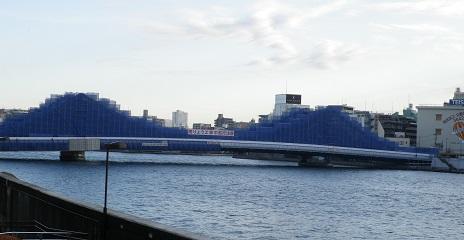
Eitai Bridge and Kiyosu Bridge are contrasting in the structure of the bridge, and their characteristics can be seen even if they are surrounded by temporary scaffolds.
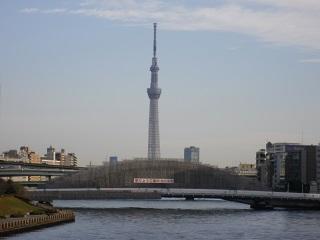
Eitai Bridge against the backdrop of the Tokyo Sky Tree from Sumida River Ohashi taken several times at the same angle.
The photo shows from Chuo-ohashi Bridge, but from Sumida River Ohashi, you can see both Eitai Bridge and Kiyosu Bridge.
The Sky Tree is the world's tallest radio tower, but it incorporates traditional Japanese techniques and crafts.
The architectural structure is an oscillation structure like five-storied pagoda, with a core pillar at the center of the building, and the surrounding area is joined by a triangular truss structure. It is said that this triangle does not need to be so fine in terms of strength, but it seems that the design is conscious of Edo Kiriko.
In addition, the exterior is not asymmetric centered on the pillar, but asymmetric with the motif of a Japanese sword.
By the way, the construction of Toyomi Bridge repairs, reinforces and raises the bridge. It is scheduled from the beginning of this year to the end of May next year, so it is a large scale that spans the next era from Heisei.
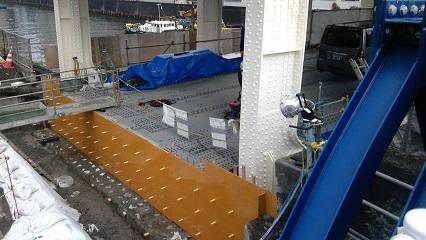
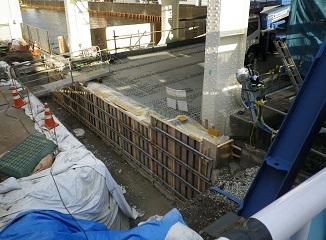
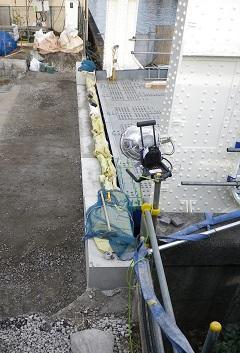 <<<<<<<<You can see the progress of the construction of the Toyomi Bridge. >>>>>> <<<<<<<<You can see the progress of the construction of the Toyomi Bridge. >>>>>>

<This is a temporary bridge pedestrian / bicycle crossing here. Cars cannot pass>
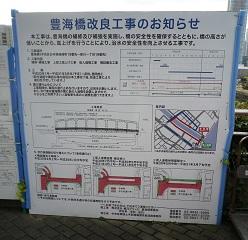
[yaz]
December 17, 2018 18:00
"What are you talking about?" I feel like I can hear a voice. Hibiya is decided to be Hibiya, where Hibiya Park is located. But near Hatchobori Takahashi, there is Hibiya Shrine and Hibiya Riverside.
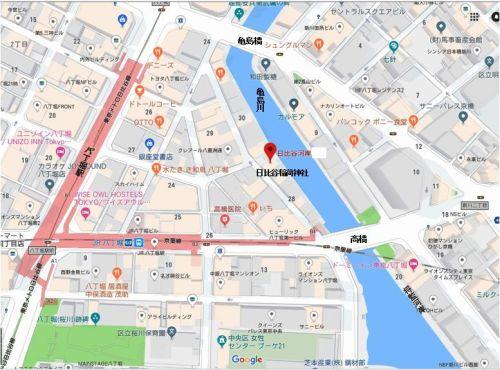
The origin of Hibiya Inari Shrine was that when Michio Ota built Chiyoda Castle in the first year of Choroku (1457) in the Muromachi period, he was grateful for the blessings of heaven and earth and worshiped at Hibiya Park. When Ieyasu Tokugawa entered the prefecture, a major expansion of Edo Castle began, and Hibiya Gomon was built and was kicked out. As an alternative site, it was transferred to the current Higashi-Shimbashi 2-1 near the intersection of Loop Route 2 and Daiichi Keihin.
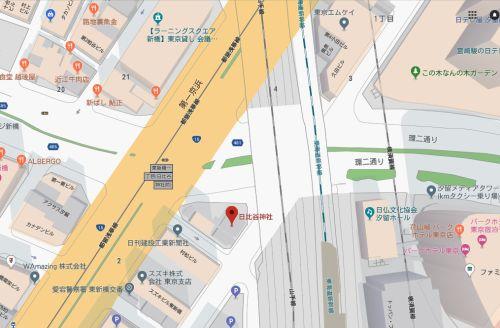
However, since the worshipers of Inari would be in trouble if they were not enshrined on the coast, they buried the tidal flats of Hatchobori, built shrine hall, and moved to their current location.
Hibiya was a Hibiya inlet, and was setting up a "fin" and picking up glue. One of the things that have been used since ancient times is a seaweed savory made from branches and bamboos, such as "kashi" and "nara", which have many twigs. In the 1710s, lobes began to be built to actively grow seaweed. One piece of Ando Hiroshige's "Hundred Famous Views of Edo" (1856-57) "Minamishinagawa Samezu Coast" depicts a stunning landscape of a seaweed farm.
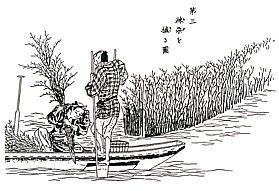 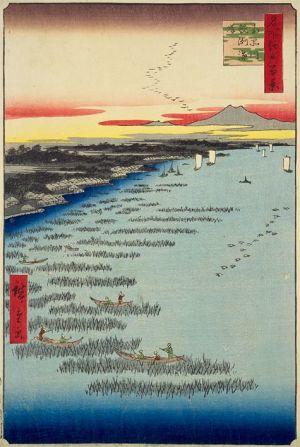
This solves the mystery of Hibiya in Hatchobori.
[Hanes]
December 2, 2018 14:00
Hello! This is a new correspondent, Hanes. 
This time, we will take up the order of the two bridges (each river) in the continuation of [Chuo-ku Tourism Certification Measures] River / Bridge (1).
If you learn the order of the bridge that spans each river at the stage where the name of the bridge has come to mind to some extent
After all, it's recommended to have fun.
How to remember the Hanes style is as follows:
■Sumida River (from upstream/north → south)
"Parents at the end of today, carry Nakatsukuda (boiled)."
Ryogoku Bridge (Ryo), Shinohashi Bridge (Shin), Kiyosu Bridge (Kiyo), Sumida River Ohashi (Su), Eitai Bridge (E), Chuo-ohashi Bridge (Chu), Tsukuda-ohashi Bridge (Tsukuda), Kachidokibashi (Ka), Tsukiji Ohashi (Tsuki)
※The Sumida River Road Bridge, which spans Ryogoku Bridge and Shinohashi, is omitted.
Even if you are a little overdoing it, you will win what you have learned
Isn't it easy to remember if you imagine such a situation?
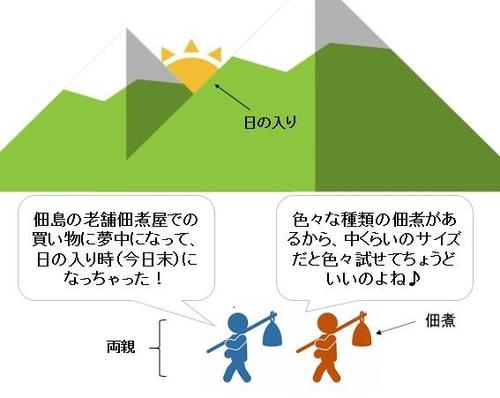
As expected, my parents don't come back with Tsukudani, but
This may have happened in the past.
■Nihonbashi (from downstream/east to west)
"Wealth, go! At one time in Japan!"
Toyomi Bridge (To), Minato Bridge (Mi), Kayaba Bridge (Kaka), Armor Bridge (Yo), Edobashi (E), Nihonbashi (Nihon), Nishikawabashi (Ni), Ichiishibashi (I / How to read "Ichikokubashi"), Tokiwa Bridge (To), Former Joban Bridge (Ki), New Tokiwa Bridge (Ni / New Tokiwa Bridge (Ni / New)
Is this an image like this?
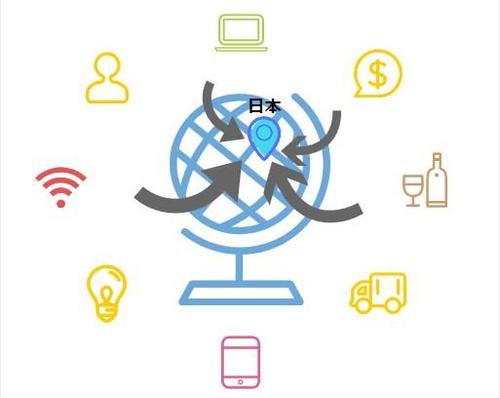
The wording of the Sumida River was an image of traditional culture, but it was also an image of traditional culture.
Nihonbashi seems to be the current Japan where the inbound spirit is growing.
You can remember the order of the bridge over the two rivers....However, the Chuo-ku Tourism Certification cannot be beaten by this alone.
Where do the Sumida River and Nihonbashi River join, and what is the first bridge to be built after joining?...You need to keep it down to that point!
This will be carried over to the next article.
Last but not least!
■Kamejima River (from upstream / north to south) that I want to keep if I can afford it
The Kamejima River begins at the upstream Nihonbashi sluice gate and ends at the downstream Kamejima River sluice gate.
In the meantime, there are five bridges, and those who aim for a high score should also remember.
The word matching is "Evolution of Reigan! It's expensive!"
Reigishi Bridge, Shin Kameshima Bridge, Kameshima Bridge, Takahashi (Taka), Minami Takahashi (Na) / South = "Nan" / How to read "Minami Takabashi")
There is quite a sense of force, but Reigishi Island is due to landfills and land uplifts.
Please remember along with the history that the sea level was higher than the Edo period.
※In this article, we will introduce some of the reasons for this.
If you remember the contents written here, you won't be able to pass.
Please include it in advance.
Valuable Information| Ningyocho, Hamacho, Higashinihombashi area| Tsukuda, Tsukishima, Kachidoki and Harumi areas| Nihonbashi, Kyobashi and Yaesu areas| History, culture| Tsukiji, Shintomi, Minato area| Kayabacho, Hatchobori, and Shinkawa areas
Page top▲
1
|
Links
|
![]()
![]()
![]()


![]()

![]()
![]() s."
s."![]()

![]()
![]()

![]()
![]()

![]()












